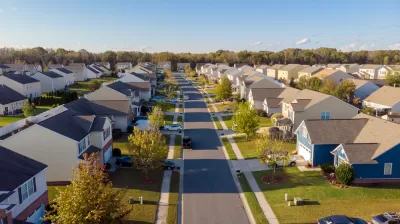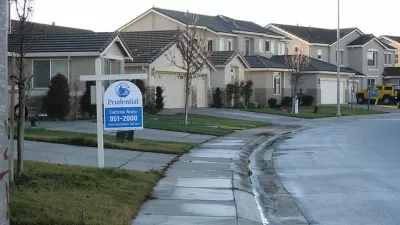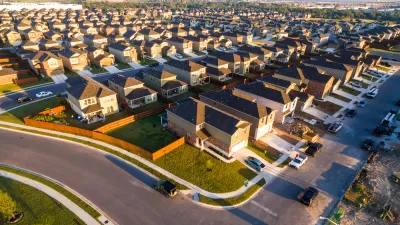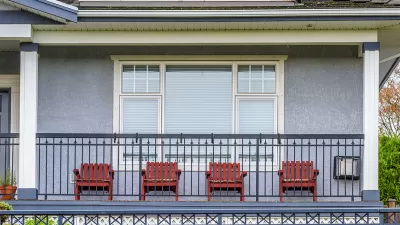A growing number of homeowners associations around the country are using old legal tools to keep institutional investors from buying up, and renting out, the neighborhood.

An article by Peter Whoriskey and Kevin Schaul for The Washington Post tells the story of a group of Charlotte residents that fought back against pressure from institutional investors looking to corner the real estate market in their neighborhood.
Charlotte is one of the prime examples of the trend of large Wall Street investors buying up housing stock, especially in distressed neighborhoods, communities of color, and neighborhoods with a large amount of rental housing units.
"Last year, investors bought nearly 1 in 7 homes sold in the nation’s top metropolitan areas — the most in two decades of record-keeping, according to a Washington Post analysis of data from realty company Redfin," according to the article. In Charlotte, those numbers are more like one in four. The only city where investors are buying a larger share of the number of housing for sale is Atlanta, according to the Post analysis.
In a move that has been repeated by a growing number of neighborhood and homeowners associations around the country, according to the article, the Potters Glen Homeowners Association in Charlotte created a new rule that requires any new home buyer in the neighborhood to wait two years before renting their new home out. "Since the board adopted the rule in 2019, property records show the pace of investor purchases has dropped by more than half," according to the article.
For the record, some institutional investors are pushing back on tactics like the Potters Glen rule in terms that echo the opposition to exclusionary zoning practices.
Invitation Homes, one of several big firms that own houses in Potters Glen, called the rental restrictions "prejudicial, discriminatory, uninformed, and misaligned with the concept of fair housing." The company said it was "disheartened by the trend of HOAs [homeowners associations] determining that renters are not welcome in their neighborhoods."
For another example of resistance to the growing footprint of Wall Street in the real estate market, see the example of the Port of Greater Cincinnati Development Authority, which in January 2022 beat out a long list of investors for the purchase of 195 houses in Cincinnati and surrounding Hamilton County.
FULL STORY: Corporate landlords are gobbling up U.S. suburbs. These homeowners are fighting back.

Alabama: Trump Terminates Settlements for Black Communities Harmed By Raw Sewage
Trump deemed the landmark civil rights agreement “illegal DEI and environmental justice policy.”

Planetizen Federal Action Tracker
A weekly monitor of how Trump’s orders and actions are impacting planners and planning in America.

The 120 Year Old Tiny Home Villages That Sheltered San Francisco’s Earthquake Refugees
More than a century ago, San Francisco mobilized to house thousands of residents displaced by the 1906 earthquake. Could their strategy offer a model for the present?

LA’s Tree Emergency Goes Beyond Vandalism
After a vandal destroyed dozens of downtown LA trees, Mayor Karen Bass vowed to replace them. Days later, she slashed the city’s tree budget.

Sacramento Leads Nation With Bus-Mounted Bike Lane Enforcement Cameras
The city is the first to use its bus-mounted traffic enforcement system to cite drivers who park or drive in bike lanes.

Seattle Voters Approve Social Housing Referendum
Voters approved a corporate tax to fund the city’s housing authority despite an opposition campaign funded by Amazon and Microsoft.
Urban Design for Planners 1: Software Tools
This six-course series explores essential urban design concepts using open source software and equips planners with the tools they need to participate fully in the urban design process.
Planning for Universal Design
Learn the tools for implementing Universal Design in planning regulations.
Ada County Highway District
Clanton & Associates, Inc.
Jessamine County Fiscal Court
Institute for Housing and Urban Development Studies (IHS)
City of Grandview
Harvard GSD Executive Education
Toledo-Lucas County Plan Commissions
Salt Lake City
NYU Wagner Graduate School of Public Service





























